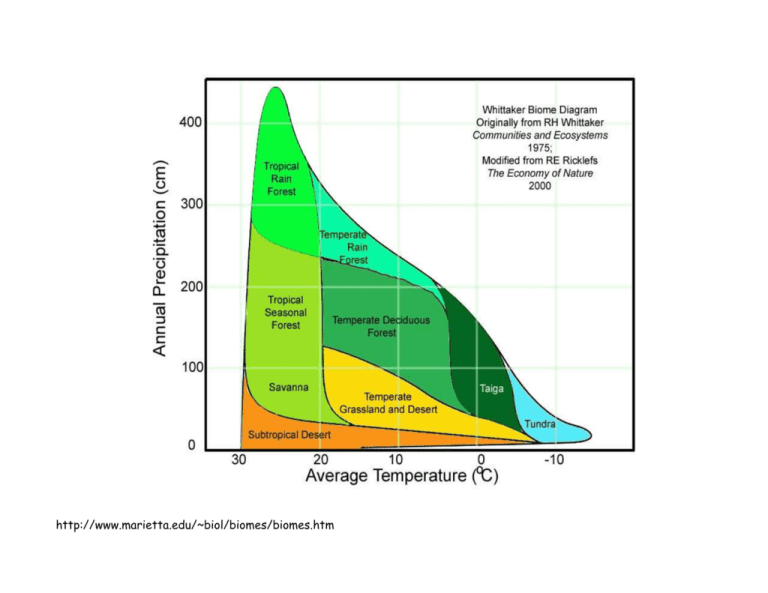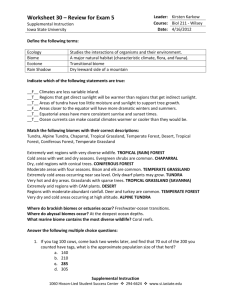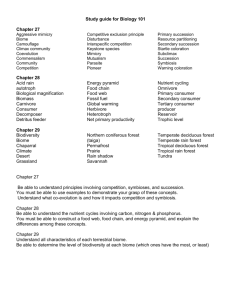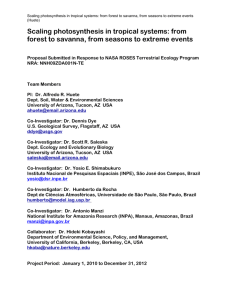http://www.marietta.edu/~biol/biomes/biomes.htm PREDICT THE
advertisement

http://www.marietta.edu/~biol/biomes/biomes.htm PREDICT THE BIOME Name: _____________________________ Hr: _______ Note that in Whittaker's diagram the temperature axis is reversed; that is temperature goes DOWN as you move to the right. Theoretically, if you know the average temperature and precipitation for a site, you should be able to predict what biome will develop there. Try your hand - look at the values in the table below, compare them to the diagram above, and predict the biome. Average Temperature oC Annual Precipitation (cm) 22.1 403 Tropical Rain Forest 12 105 Temperate Deciduous Forest Pasadena California 18.2 51.8 Savanna Ferron, Utah 8.8 20.9 Desert Tucson, Arizona 21.1 21.9 Subtropical Desert Santa Rosa, Costa Rica 26 165 Tropical Seasonal Forest Brazzaville, Congo 25 137 Tropical Seasonal Forest Lambarene, Gabon 25.7 195 Tropical Seasonal Forest 20 410 Tropical Rain Forest Toolik Lake, Alaska -8.8 18 Tundra Beijing, China 11.8 63.5 Temperate Grassland Seoul, South Korea 11.2 137 Temperate Deciduous Forest Archbold Biological Station 29.1 131 Tropical Seasonal Forest* Everglades National Park (Flamingo) 28.1 159 Tropical Seasonal Forest* Place La Selva, Costa Rica Marietta, Ohio Amauulu, Hawaii Biome Questions: 1. Deserts are areas that receive less than ≈ten inches of rain per year (1 in = 2.54 cm). Using Whittaker's diagram, list all of the places that are deserts based upon that definition: 2. Are all deserts hot? Provide evidence to support your answer. 3. Temperatures in deserts change a lot from day to night and from summer to winter. The organisms that live in a desert need to be able to survive these drastic temperature swings along with dry conditions, so the density and diversity of species are very low. In other words, the desert has a low carrying capacity. Tropical rain forests have a high carrying capacity. What can you infer about the density and diversity of species in a tropical rain forest? 4. There are few trees in the tundra, desert, and savannah biomes; is precipitation or temperature the reason? Support your answer with evidence. 5. Evergreens (conifers) grow in the Taiga biome. The shape of a conifer is an adaptation to its environment. Why is the "Christmas tree" shape helpful?









